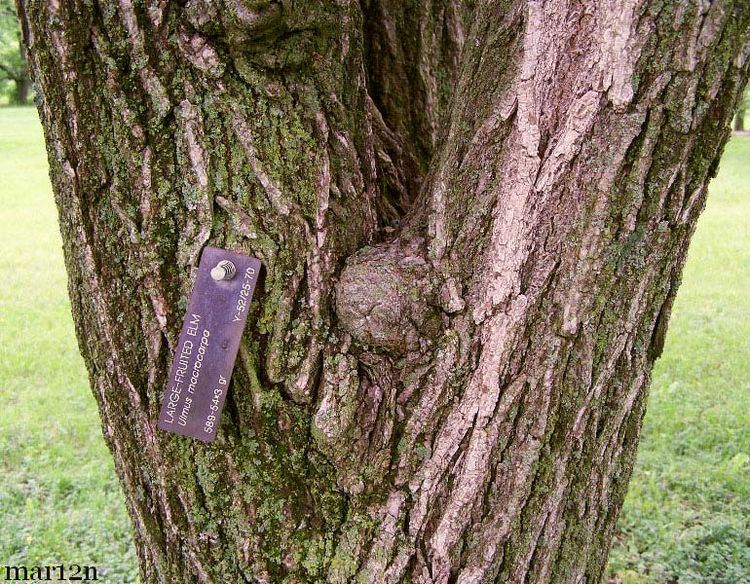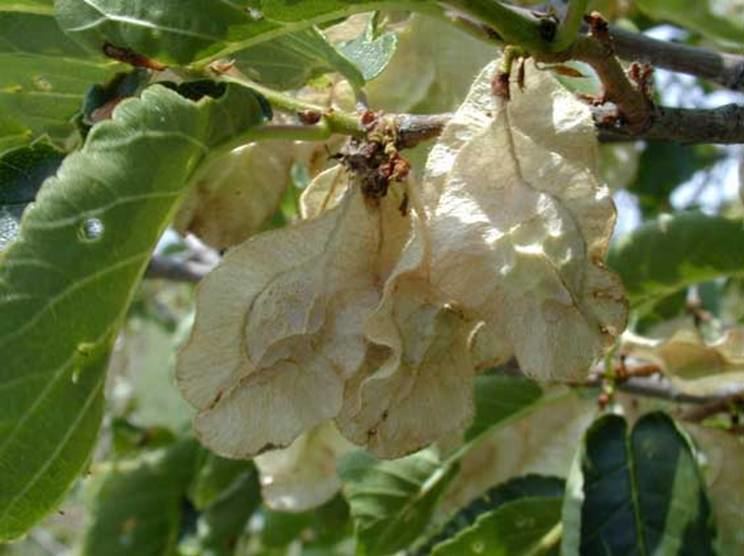Scientific name Ulmus macrocarpa | Genus Ulmus Rank Species | |
 | ||
Similar Ulmus davidiana, Ulmus laciniata, Ulmus uyematsui, Ulmus bergmanniana, Ulmus castaneifolia | ||
Ulmus macrocarpa , the large-fruited elm, is a deciduous tree or large shrub endemic to the Far East excluding Japan. It is notable for its tolerance of drought and extreme cold and is the predominant vegetation on the dunes of the Khorchin sandy lands in the Jilin province of north-eastern China, making a small tree at the base of the dunes, and a shrub at the top [3].
Contents
- Description
- Pests and diseases
- Cultivation
- Subspecies varieties
- Hybrids hybrid cultivars and cultivars
- Accessions
- Nurseries
- References

Description

By the age of ten years, the tree bears a close resemblance to the American elm U. americana, but will never approach the latter's size. The tree can reach a height of 17 m, with a slender trunk rarely exceeding 0.4 m d.b.h; the bark is longitudinally fissured, and dark grey in colour. The twigs often develop corky wings that may persist for several years. The leaves are usually obovate < 9 cm long by 5 cm broad (significantly smaller on juvenile trees) and chiefly characterized by their thick, leathery texture and obtusely doubly or simply toothed margins. The perfect, wind-pollinated apetalous flowers appear from March until May. As implied by its name, U. macrocarpa is distinguished by its large, orbicular, wafer-like samarae < 50 mm in diameter, which ripen in May and June.
Pests and diseases

Possessed of a moderate resistance to Dutch elm disease and a low susceptibility to elm yellows, it has also proven very resistant to the elm leaf beetle Xanthogaleruca luteola in trials in Oklahoma [4] and Italy.
Cultivation

The species was introduced to the United States at the Arnold Arboretum, Massachusetts, in 1908, and to the UK at Aldenham House in Hertfordshire, almost certainly as part of the quincunx elm avenue leading to the front of the house, by Vicary Gibbs (1853–1932) in the late 19th century. What remained of the avenue after the advent of Dutch elm disease was cleared circa 1980 to make way for a cricket pitch.
The tree has been assessed at the Morton Arboretum, Illinois, for its landscape potential, and is now considered suitable for open areas such as parks and campuses. Typically, U. macrocarpa is intolerant of poorly drained ground prone to waterlogging. U. macrocarpa has been found to be the most cold hardy of the Chinese elms. In artificial freezing tests at the Morton Arboretum the LT50 (temp. at which 50% of tissues die) was - 36 °C.
Subspecies & varieties
Two varieties are recognized: var. glabra Nie & Huang and var. macrocarpa L.K.Fu
Hybrids, hybrid cultivars and cultivars
A natural hybrid of U. macrocarpa and U. davidiana var. japonica, named Ulmus × mesocarpa was discovered in South Korea in the 1980s. U. macrocarpa is believed to have been used in recent (post 2000) hybridization experiments at the Morton Arboretum but results have yet (2008) to be published. There are no known cultivars of this taxon.
